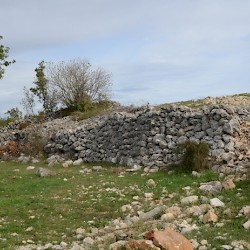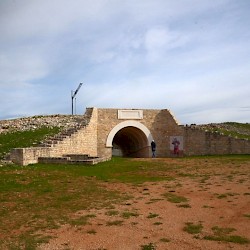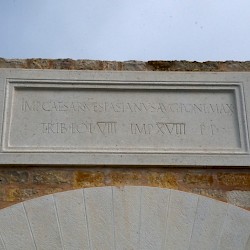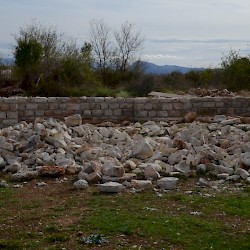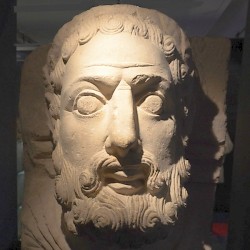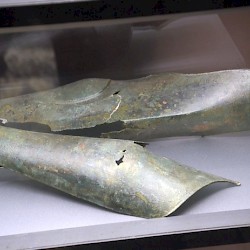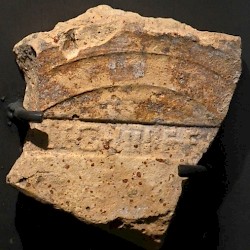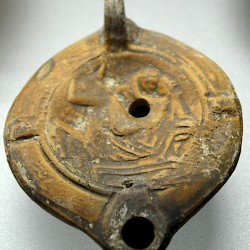Burnum (Kistanje)
Q28971092Burnum: Roman legionary base and town in Dalmatia. The nearest modern towns are Kistanje and Ivoševci.
Site
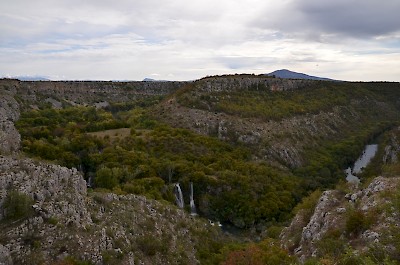
If you arrive in Dalmatia from the sea, you will immediately notice the mountains. The Illyrian ports are usually built on the foothills and there are only a couple of accessible roads to the interior. One of these routes is the river Krka, which was called Titius by the Romans and Korkoras by the Greeks. Going upstream, you would reach the land of the Burnistae, an Illyrian tribe. One of their main settlements was a hillfort near modern Puljane, close to the Manojlovac waterfalls.
It was impossible to follow the river any further, because there were all kinds of cascades. (It is possible that the Krka is identical to a river that the Greeks had nicknamed Catarbates, referring to the waterfalls.) A land road, however, continued to the interior.
Military Base
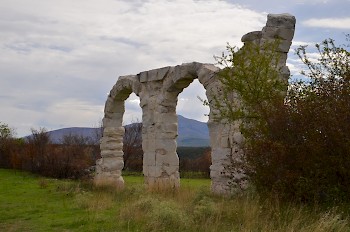
During Octavian's war in Illyria (35/33 BCE), the Romans built one of their legionary bases opposite Puljane. Later, in the 20s, it was again used by subunits of the recently created Twentieth Legion Valeria Victrix, which was later transferred to Aquileia. In short, the Roman base among the Burnistae was a point to which the Romans returned sometimes, without occupying this point permanently.
This changed after the "War of the Two Batos" (6-9 CE): a major revolt of Pannonian and Dalmatian tribes against the Romans, suppressed by the Roman commanders Tiberius and Germanicus. The Twentieth Legion may have returned in those days,note but it was left to the Seventh and Eleventh Legions to build a new fortress, made out of stone. A bit to the southeast, the Eighth Legion Augusta occupied Tilurium, modern Trilj, where the presence of the Seventh and Eleventh is attested as well.
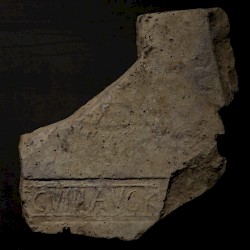 Burnum, Tile of VIII Augusta |
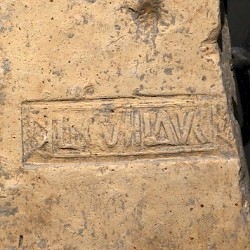 Burnum, Tile of VIII Augusta |
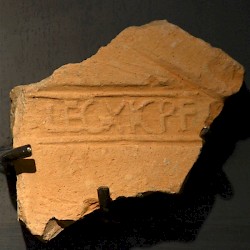 Burnum, Tile of XI Claudia |
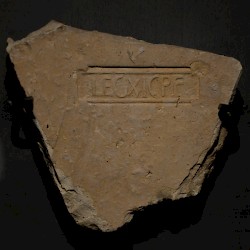 Burnum, Tile of XI Claudia |
In 42, the governor of Dalmatia, Lucius Arruntius Camillus Scribonianus, revolted against the emperor Claudius, who had recently come to power. The soldiers of the Seventh and Eleventh, however, immediately put an end to this rebellion. They were awarded the honorary title Claudia Pia Fidelis, loyal and faithful to Claudius. Perhaps the amphitheater next to the fortress was another award from a grateful emperor.
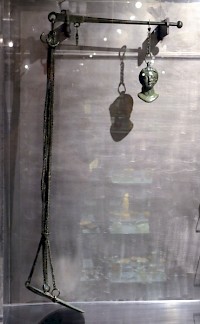
The Eighth Legion moved from Illyricum to Novae in Moesia in 46 or 47, while the Seventh Legion left Burnum in c.58: it was transferred to the Danube, where it replaced the Fourth Legion Scythica (which had been sent to Syria). The Eleventh remained in Burnum until the Year of the Four Emperors (69), when it was replaced by the Fourth Legion Flavia Felix.
This unit completed the amphitheater, which was about half a kilometer southwest of the legionary base. A monumental inscription dates the completion to the eighth year of the emperor Vespasian, i.e., 76/77. The arena was about 44 x 33 meters, while the outside dimensions were 100 x 89 meters. Another new structure was the exercise ground, which measures 150 x 150 meters. Writing in this age, Pliny the Elder calls Burnum a fortress famous for battles.note
The Fourth left Burnum in 86; a subunit of the Eighth Legion Augusta, which by now was serving in Strasbourg, returned to Dalmatia and occupied Burnum, until these soldiers left as well, and the only garrison at Burnum was an auxiliary unit, which in turn became a police station in the second century.
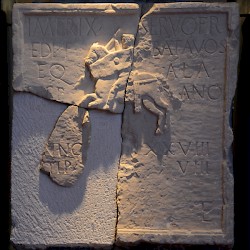 Burnum, Tombstone of Imerix the Batavian |
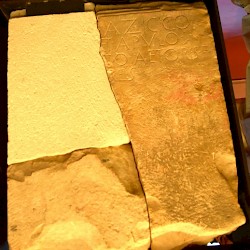 Burnum, Tombstone of ..azicus |
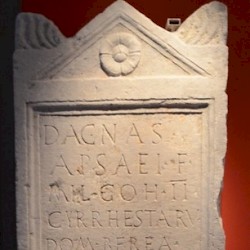 Burnum, Tombstone of Dacnas |
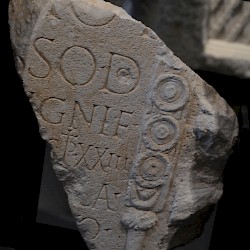 Burnum, Tombstone of a signifer |
Civil Settlement
Stones from the legionary base were reused in the civil settlement, which survived the departure of the army. The town must have been inhabited by the veterans whose tombs have been excavated. It must have been a substantial settlement that could afford to build an aqueduct with a length of almost thirty-three kilometers. The amphitheater remained in use and saw some additions and changes. For example, one of the staircases was replaced by a small sanctuary.
The town continued to flourish and is mentioned for the last time in the sixth century CE: Procopius mentions it in his account of the war between the Byzantines and Ostrogoths.note After 536/537, the town must have been abandoned. This may have happened in the late sixth century, when the Avars invaded the northern Balkan Peninsula.
